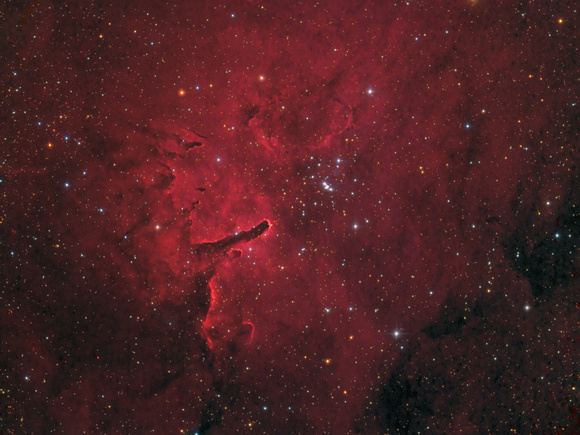Sh2-86 - Emission Nebula in Vulpecula
Date Posted: 1/28/2025
Date Taken (Ha): 6/7/2020, 7/2/2020, 7/11/2020
Date Taken (LRGB): 4/19/2021, 5/12/2021, 5/13/2021, 5/14/2021
Scope: Planewave CDK 12.5 f/8, 2541mm
Camera: SBIG STL-11000 with Astrodon Tru-Balance E-Series Gen2 filters
Temp: -15C
Mount: Losmandy Titan
Guiding: On-axis via ONAG-XM and SX UltraStar at 2541mm. FocusLock real-time focus for focusing.
Exposure: LHaRGB, 320:705:185:180:180. Luminance 10min unbinned; RGB 5min binned 2x2; Ha 15min unbinned.
Calibrated and Stacked with CCDStack2. Processed with CS4.
NGC 6823 is the open cluster in this picture. Technically, NGC6820 is a small reflection nebula near the cluster, but it's not really visible in this image due to some processing mistakes. The larger emission nebula is commonly referred to as NGC6820, but is also catalogued as Sh2-86. It is about 6,000 light years away.
I always struggle with Ha image, and I found this one particularly. Most of the nebula only appears in Ha, so getting good color was difficult. I've processed it several times. This version is a result of my latest tweaks on 1.28.2025. I think I was able to bring out a good amount of contrast in the nebula.


